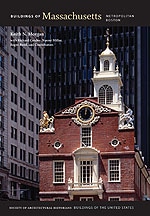
One of the earliest of Boston public housing developments financed by the Taft-Ellender-Wagner Bill of 1949, the South End Project (renamed the Cathedral Housing Project because of its adjacency to the Cathedral of the Holy Cross) was intended for African American families in the Boston Housing Authority's attempt to engineer racial segregation in public housing. The land had been cleared of brick row houses before World War II and lain vacant for nearly a decade. Harold Field Kellogg provided an iconic public housing design with a diagonally positioned cruciform plan central tower of thirteen stories stepping down to lower units at the edges of this yellow brick megablock. Landscaped courtyards and limited roadways sought to provide the fresh air and breathing space that housing planners felt lacking in the surrounding neighborhoods. Poorly maintained for decades, Cathedral Housing has retained its original configuration and is now being rehabilitated with city funding.














